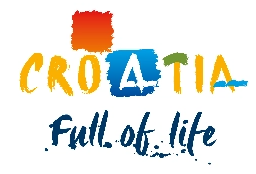


.jpg&w=3840&q=75)


Get to know the region of Buje
Kanegra
The characteristic karst landscape of the Buje Region opens up towards the sea at the coast of Kanegra, shrouded in low Mediterranean vegetation and lush and spacious pine wood touching the beach of sea washed pebbles. A spacious resort, the first one on the Croatian part of Istria offers bungalows in the shade of pines.
The naturist beach is situated in a separate part of the coast near the tourist resort. Numerous events and spectacles, sports competitions, games and entertainment for children and the amusing event "Nights of Kanegra” “make holidays interesting and lively.
Kršete
The agricultural settlement called Kršete is situated in a fertile green valley, stretching towards the sea. This area has been settled since ancient times which can be proved by epigraphic Roman foundlings originating from this place. The most important building is the church of St. Peter and Paul from the 16th century, renovated in 1885.
Krasica
Five kilometres from Buje towards Pula lies the settlement The scattered hills used to be seats of prehistoric fortresses.
Right after the turn to Baredine rises a hill, hiding amidst its lush plants the remains of the legendary Castrum Lionis, which was donated in 1102 to the church in Aquilea by the Count of Istria Ulrich II, the son of the Istrian Margrave Ulrich I of Weimar.
Marušići
The village of Marušići originates probably from the 16th century when this area was settled by Slavs. The area was settled even earlier according to fragments of prehistoric pottery found in a nearby cave. The village consists of some thirty houses.
Adjacent to the Culture House there is a sculpture park Forma viva, which arose in 1980 thanks to the International Summer Sculpture School called “Kornarija”, which was organized in an abandoned mine.
Triban
On the road to Grožnjan there is the village of Triban with its typical houses of white stone, balconies and exterior staircase and other elements of local architecture. Surrounded by the greenery, it looks like a fairytale. Triban and the adjacent village of Bibali originate from the 15th century after the Slavic migrations from the Balkans which was invaded by Turks.
The area was however settled as early as in the prehistoric period, which is witnessed by the ruins of the fortress wall of the adjacent ancient castle Krog.
Momjan
A beautiful settlement located at 270 m above the sea level, only 18 km from the Riviera of Umag and Novigrad, with a rich history and amazing natural beauties. The soil is especially suited for the cultivation of grape vine, olive and fruit trees. Momjan can be divided in two parts; the lower and the upper. In the lower part there is a bell tower (22 m) and the church of St. Martin from the 15th century.
On a rock on the west side of the church there is a ruin of an ancient castle, hiding very important events from the history of the northern Istria. The most popular sorts of wines thriving in this area are the Malvasia and the Muscat of Momjan which were famous and highly appreciated on Italian and Viennese courts.
The abundance of animal life (pheasants, does, wild boars) and other animals as well as numerous protected and unprotected bird species provide the base for the development of hunting tourism. The quality local produce and cuisine create an ideal base for the agro tourism.


Destinations
Additional Information


©2025 Colours of Istria. All rights reserved. No part of this site may be reproduced without our written permission.


















.jpg&w=3840&q=75)





